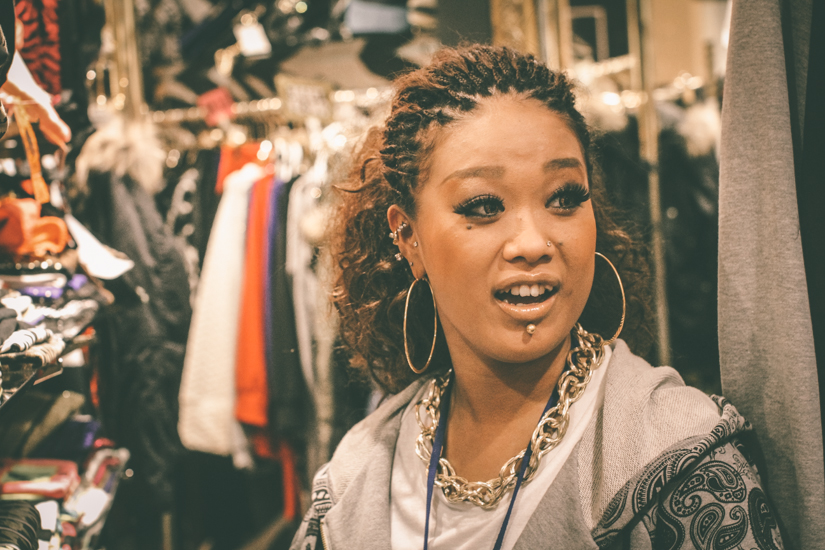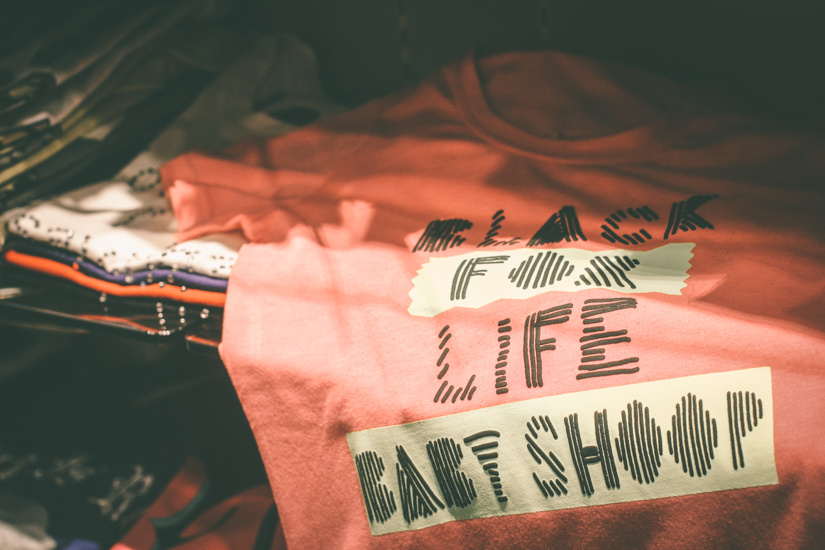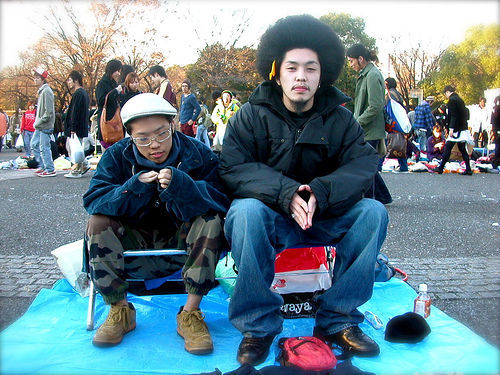Japanese hip-hop culture: the worst case of Black appropriation, or one of hip-hop’s greatest international success stories?
There are many discussions to be had about this phenomenon. Take a look at what’s been said about Japan’s hip-hop scene thus far.
Hip-hop in Japan is unoriginal
There are plenty of original aspects of Japanese hip-hop culture. Unique and notable hip-hop artists such as Nujabes (R.I.P), Eccy and Kohh represent great potential for the rest of their nation’s hip-hop scene to distinguish itself internationally. But Japanese hip-hop is not as far along in its development as U.S. hip-hop, and the growth of Japanese hip-hop includes a noticeable level of imitation.
Despite the aforementioned acts, many Japanese hip-hop artists and practitioners still depend heavily on American hip-hop traditions to create appeal. From rapping to breakdancing, those engaged in U.S. hip-hop culture taking a peek at Japanese hip-hop culture get the sense they are looking at either the past or a knock-off. From clothing trends to the contributions of Loota and Kohh on “It G Ma,” many American hip-hop fans would give nothing more than a shoulder shrug in reaction to Japanese hip-hop culture.
“Lame as fuck” like OG Maco initially thought, or a gateway to genuine cultural exchange? The next two segments will summarize both of those viewpoints.
Japanese hip-hop culture mocks Black Americans
It’s no secret that the world is fascinated with Black American culture. Some groups of people take their…interest (i.e. obsession, fetish) to different levels though.
Some Japanese hip-hop consumers engage in what is called “Black lifestyle,” more popularly known as B-Style: mimicry of Black American cultural practices to the extreme, usually by female consumers. These behaviors include wearing dreadlocks or braids, darkening of the skin, and wearing jewelry commonly linked to hip-hop culture such as hoop earrings and chains.
This is done in an attempt to express an understanding of urban Black Americans, the demographic at the core of hip-hop culture. According to this Vice article, B-Style lacks mainstream popularity. But despite that, as well as the intention of respectful emulation, practices like these are what set up Japanese hip-hop culture for criticism.

“Much is lost when culture is consumed at a distance,” John Caramanica accurately posited in a New York Times article about Keith Ape in August 2015. The thought of cultural output such as “It G Ma” and B-Style as, in Caramanica’s words, “gestures and aesthetics,” is fitting when considering the lack of exposure most B-Style enthusiasts and Japanese hip-hop artists have to Black Americans. Caramanica was also right to point out the potential for offending U.S. hip-hop culture is high in these imitative expressions.
Even more criticism can be directed at the creators of Baby Shoop (lol), the largest brand in the B-Style world. It’s one thing to be a hip-hop enthusiast in Japan looking for an outlet and having nowhere to go. But it’s another to be the group of people that creates a knowingly imitative brand to capitalize on that demand. From the not-quite-Baby-Phat name to their official slogan “Black for life,” accusations of cultural theft and disrespect are much more appropriate when directed at entities such as Baby Shoop.

Hip-hop in Japan respectfully preserves and spreads hip-hop culture
Though it would be easy to do so after learning of Baby Shoop’s existence, outright declaring Japanese hip-hop culture as appropriation is tricky.
This Japanese news story covering B-Style, featuring previously pictured B-Stylist Hina, gives you a sense for how closely practitioners like her try to emulate what they see in U.S. hip-hop.
On one hand, going out of your way to have brown skin and dreads in order to look like Black hip-hop artists is strange. But is imitation a bad thing here? Hina seems to study hip-hop style trends through intent readings of The Source magazine and studying music videos.
Though B-Style has become a uniquely Japanese social experience, it is done with such a clear acknowledgement of American hip-hop that it’s hard to accuse someone like Hina of appropriation. Is it right to completely adopt a cultural appearance simply because you admire it? No. But is there an intent to redefine or own the meaning of those symbols? Arguably, no.
Japanese hip-hop is largely based on strict reverence of hip-hop’s original practices. Breakdancing in Japan, for instance, is practiced in a way consistent with its original practice in New York during the 1980s and 1990s.
In an interview done by Huck Magazine, Masayuki ‘DJ Mar’ Imanaga, an influential figure in Tokyo’s hip-hop scene, explains that a lot of music and style from the 1980s and 1990s have not “passed their sell date.” Tetsuhiko Endo, the author of the article, says respect for what comes before is “repeated like a mantra in the Japanese dance community.” Endo illustrates this point by mentioning an instance where a DJ at Studio Coast, a popular Tokyo dance studio, played ‘Pony’ by Ginuwine for a dancer’s routine. Endo said at first it made him, “…want to sneer. But I ended up bouncing along instead.”
My Take
Whatever you think about breakdancing in 2016, or Japanese/Korean trap music, the respect and passion to learn hip-hop’s roots is evident in much of Japanese hip-hop culture. There aren’t enough deep-tanning, Baby Shoop-wearing people in Japan to dismiss this more central truth of Japanese hip-hop culture.
People are always going to be curious about other peoples’ experiences. Culture is an expression of unique experiences, and emulating a different culture intuitively comes before understanding it. But race is not a style, and doing before thinking is always wrong when it comes to respectful cultural exchange.
That being said, Japanese consumers have too much of a genuine interest in hip-hop to be dismissed for several cultural missteps. Frankly, if hip-hop is what it takes for the global community to understand racial politics in the USA, I am for it. If we want hip-hop to be the globalizing force that it can be, we have to take Keith Ape’s word for it when he admits in Caramanica’s article that “It G Ma” was birthed from surface-level understanding of American culture, and that he’ll be more mindful of it in his music. Likewise, giving B-Stylers like Hina a chance to figure out what is and is not okay with B-Style would also be fair.
Ending on an optimistic note, doubts surrounding Keith Ape’s breakout haven’t stopped U.S. artists from reaching out to him. If Maco can come to terms with “It G Ma,” perhaps we should all show more support for Japanese and greater East Asian hip-hop culture.



[…] Hip Hop as a culture is seen as an anti-establishment force, fighting for black rights in America. Whereas, Japanese Hip Hop can take an extremely nationalist or even racist tone. Initially, Hip Hop was seen as embodying not only the ‘black experience’ but the ‘physical black body’ (Thomas, 2016), which introduced B-style; dreadlocks, braids, jewelry and some would even go as far as darkening their skin to mimicry Hip Hop’s culture (Tsadwa, 2016). […]
“Part of B-Style is that you do not look Japanese” – Black Lifestylin’ in Japan @1:51
The video then goes on to trace one root of Hina’s B-style, that of her frizzy hair ripe for later styling. This isn’t the first time Japan found itself crossing cultures with America, looking at the tapestry of Americana love the two countries have been weaving more tightly in the past decade. Whether its hip-hop or wabisabi workwear (and Anime, but that’s another body of text), artifacts located around American cultural legacies find their way into the hearts of Japanese fandoms.
With respect to the appeal of hip hop abroad, I wonder what it means for other parts of Asia when one of its cultural trendsetting countries is a bellwether for capturing these particular slices of American legacies. Will other Asian countries follow suit to a similar extent? What might that look like?
Thanks for your thoughts.
And thank you for your thoughts, Tony!